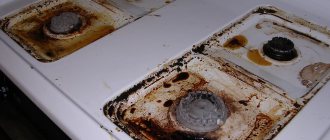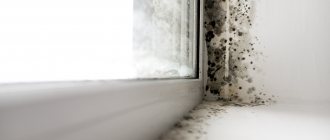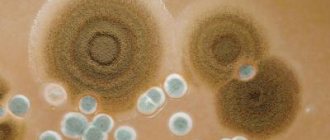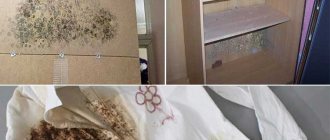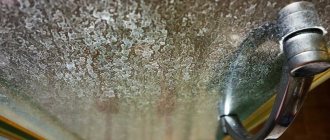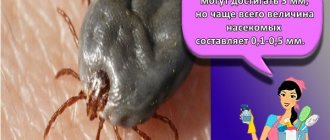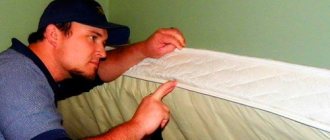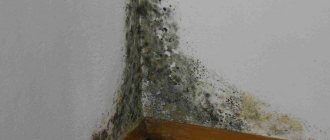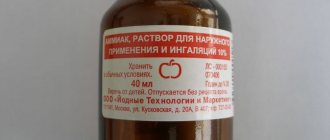Household mold may seem harmless, but its danger to humans should not be underestimated. Mold particles in an infected room spread through the air, entering the body through breathing. Regular exposure to mold depletes the immune system and triggers severe asthma attacks. Dealing with the effects of mold infestation can take years.
Mold is a fungus with a high destructive potential. It destroys repairs, damages furniture, and accelerates the wear and tear of equipment. It is almost impossible to remove it forever using household means. The slightest fluctuations in humidity - and a dark coating appears on the walls again. Don't know how to get rid of mold? To save your time, we have selected the most effective remedies for mold and mildew in the home for DIY treatment that give the best results.
Harm and types of mold
Microbiologists know more than 150 thousand mold microorganisms. Some types of fungus are often found in the house, which can be easily distinguished from each other by color.
Mold quickly takes over the space
Greens
Penicillium fungi, with a moss-like color and lumpy, loose surface, occasionally form on furniture, brick and concrete. Often found on spoiled products. They cause neoplasms, bronchial asthma, and cirrhosis of the liver. This species became the ancestor of the penicillin group of antibiotics, and is therefore considered noble.
Penicillium
White
Mucor fungus grows when plants are watered abundantly. The development of a whitish coating is provoked by increased temperature and dampness in the apartment, uncontrolled fertilizing with compounds containing nitrogen. Sometimes it reproduces on fruits and vegetables. Propagation stops at temperatures below -8℃.
Mucor
Pink
They affect grain, root crops, as well as the top layer of surfaces, without penetrating deeply into the structure of materials. This pathogen is easier to deal with than others.
Pink mold on the wall
Yellow
Cover damp walls, wallpaper, plaster. Found on fish, bread, and dairy products. Harmful microorganisms cause severe allergic reactions, liver dysfunction, and gastrointestinal tract.
Yellow mold on wood
Orange
Highly toxic fungi appeared as a result of mutation of other micromycetes. They settle on damp walls and spoiled food. When it appears, it resembles a pasty coating. Later it dries out and looks like rusty powder. It starts to smell unpleasant.
Orange micromycetes
Blue
A cloudy blue Ceratocystis fungus takes up residence on a tree. Covers furniture and parquet. Destroys the coating, forms cracks in which moisture accumulates. In such a favorable environment, pathogens are formed.
Blue fungus
Black mold
The most common species, settling on any materials. If Aspergillus Niger is not dealt with, your health may deteriorate: insomnia, headache, and a feeling of constant fatigue appear. Sometimes serious illnesses develop.
Aspergillus Nigeria
Mold in an apartment destroys wooden, concrete, and plastic coverings; causes metal corrosion. Damages textiles and leather items - clothing, furniture, accessories. Dangerous microorganisms infect products. Destroy paper media - documents, books.
The spores worsen health: they cause allergic reactions, diseases of the hair, nails, and skin. In severe cases, bronchial asthma, pneumonia or aspergillosis, a fungal disease of the lungs, develop. Toxic compounds found in mold sometimes cause rapid development of cancerous tumors.
Types of pathogenic microorganism
Let us briefly describe the main strains known as “black mold”.
- Aspergillus niger. A saprophytic fungus that settles in damp, warm places. Feels good in the bathroom, on damp books, in air conditioners, etc. Dangerous for health.
- Aspergillus fumigates. Initially lives on affected vegetables or fruits. Under favorable circumstances, it moves to any other surfaces. Dangerous for allergy sufferers and children.
- Cladosporium. Settles inside and outside residential premises. May be dangerous for people with weakened immune systems.
- Chaetomium. Quite rarely found indoors, it can live on any surface. If it enters the gastrointestinal tract, it causes severe poisoning, which can be fatal.
- Penicillium. Lives on a variety of surfaces. In industry it is used for the production of medicines and exclusive cheeses. Safe for people, with the exception of a few strains.
A non-specialist will not be able to determine the type of pathogenic microflora by appearance. Therefore, the same means are used to combat it. Although it is believed that aspergillus strains most often settle in homes.
Causes of mold formation
Microscopic mold spores get from apartment to apartment with plants, on pet hair, and clothes. The spores are carried by air currents and, when they land on damp surfaces, begin to germinate. Mold develops intensively in a nutrient medium - on wood, in flower soil, paper, brick and concrete walls.
Flower soil is a complete nutrient medium for micromycetes
Fungi easily adapt to their environment, but the necessary conditions for the appearance and development of molds are known:
- increase in air temperature from +20℃;
- excess carbohydrates;
- leaking water pipes or roof;
- high (from 75%) humidity;
- freezing of walls;
- poor ventilation;
- soil dampness;
- depressurization of windows;
- insufficient heating of the apartment.
If these conditions are met, then mold at home begins to multiply intensively on products and materials - rubber, carpets, linoleum fabric base, plastic and even concrete. Dirt in the apartment provokes the appearance of bacteria, and along with them, fungi begin to grow rapidly.
Why does mold appear?
To defeat mold, it is necessary to determine the cause of its appearance. After all, its spores are found in any room, and if favorable conditions are created for it, it begins to come to life and grow.
So let's get down to business.
- High humidity combined with poor ventilation. Kitchens and bathrooms are often affected areas, for obvious reasons.
- Walls that are frozen.
- Leaking water from water pipes
- Ground moisture
- Leaky roof in a house
- A room that is rarely heated
When mold appears, a “dirty” heavy aroma appears that is familiar to everyone. It is important not only to get rid of such plaque, but also to prevent the cause of its appearance.
Signs of fungus
The first hint that mold has appeared in the house is the obsessive smell of dampness. Later other signs will clearly appear:
- change in surface color;
- peeling of plastered walls;
- formation of black, gray or white spots and dots;
- the appearance of plaque resembling crusts, film, powder;
- deformation of the structure of the material - the wood will begin to wrinkle and crack, the paint will begin to delaminate.
Having determined the source of the unpleasant odor, they begin to work. To remove fungus from walls, ceilings or floors, you need to be patient and familiarize yourself with the methods of getting rid of it.
The moldy walls are darkening
We carry out prevention
Agree, it is always easier and cheaper not to eliminate the problem, but to prevent it. Therefore, it is necessary to periodically prevent the appearance of black mold in the house. Such measures include:
- regular ventilation;
- checking the proper operation of ventilation;
- checking the premises for fistulas, leaks, cracks and eliminating them;
- treating all existing building materials with special antiseptic agents (before repairs);
- eliminating holes and cracks in frames, if any;
- ventilation of the bathroom.
Fans for the bathroom
Important! Don't dry things in the bathroom!
Black mold is a dangerous enemy of humans, causing great harm to health. It is possible and necessary to fight it, but it is best not to start the problem and start solving it at a very early stage. Then victory will definitely be on your side.
Ways to get rid of mold in the house
To remove fungus in an apartment, use available home remedies.
Hydrogen peroxide
A pharmaceutical preparation (3%) is used to treat contaminated kitchen furniture and appliances, and hard surfaces in the bathroom. The product is used in its pure form or added to other components:
- The affected area is sprayed with the product. After 2 - 2.5 hours, wipe this area with a damp cloth.
- If the surface is very blackened, combine equal doses of peroxide and vinegar. To enhance the fungicidal effect, eucalyptus or tea tree oil is added to the solution. Spray evenly over the surface. After 10 - 15 minutes, remove the remaining spores with a brush.
- To two liters of water add 0.5 liters of boric acid and one liter of perhydrol and vinegar. The liquid is distributed over the contaminated area.
Hydrogen peroxide causes lightening of individual fragments of the material.
Reference! Plasterboard structures covered with fungus are dismantled and replaced with new ones. Before finishing, new slabs are treated with antifungal compounds.
White vinegar
At home, vinegar is often used to kill mold. The acid neutralizes various types of micromycetes without releasing toxic fumes. White vinegar is not diluted to enhance the effect of the liquid: pour it into a spray bottle and spray the moldy walls. Then the surfaces are wiped with a napkin. After an hour, the treated area is rinsed with water and wiped.
Effective home remedy
For mold on balcony walls, use a mixture of copper sulfate and vinegar. Add 2 tablespoons to 5 liters of water. l. acid and 0.25 g of copper sulfate. The resulting substance is heated to 75℃ and evenly sprayed on the walls. The procedure sometimes has to be repeated after 3.5 - 4 weeks.
Citric acid or lemons
The action of citric acid is similar to that of vinegar: the concentrated acidic substance kills spores. Dilute 1 teaspoon in a glass of water. l. powder or squeeze juice from five to seven lemons. After treatment, the solution is not washed off; sometimes, after drying, the operation is repeated.
This method is often used to clean bathroom tiles.
Baking soda
A saturated solution of baking soda sanitizes coatings. After treatment with alkali, the fungus will lose its ability to reproduce, excess moisture and foreign odors will disappear. To prepare the solution, take 1 table per glass. l. powder. The components are thoroughly mixed and the damaged surfaces are sprayed. The liquid is not washed off, it is left as a prophylactic.
Soda and washing powder
To easily wash away traces of black mold on tile joints, mix 1 table. l. baking soda, 2.5 tbsp. l. washing powder with a glass of hot water. Stir until the components dissolve. The resulting composition is applied to the seams and the tiles are wiped.
In an alkaline environment, spores die
Iodine solution and camphor balls
When the first alarm signals appear - the formation of a thin black “cobweb” or small spots, when you do not want to use aggressive special means, containers with camphor beads and open bottles of iodine are placed next to the infected corners.
The antiseptic evaporates quickly, so new bubbles are added periodically. This method is used in old houses before renovation or in non-residential premises.
Borax
Sodium borate is a strong fungicide that disinfects and deodorizes surfaces. Works well against pathogens on concrete. Combine 4 liters of heated water and a glass of borax. Stir until the microgranules dissolve. The affected wall is treated with liquid, then the mold is removed with a brush.
The second option: a paste is made from borax, which is distributed over the moldy area. After 5–10 minutes, the paste is scraped off and the wall is cleaned with a brush.
Ammonia
To treat the ceiling and walls against fungus, ammonia is used: equal volumes of alcohol and water are mixed and sprayed over contaminated areas. After an hour, the mixture is washed off and the room is ventilated. Any hard surfaces should be washed with a caustic liquid.
Additional Information! Do not combine ammonia with bleach: toxic gases are released when the substances interact.
Ammonia destroys spores
Chemical bleach
Sodium hypochlorite contained in the preparation destroys fungus and spores. You should not use bleach and other chlorine-containing gels to clean floors, furniture and walls covered with wallpaper: the caustic substance destroys the top layer of the coating and discolors the surfaces.
Bleach cannot remove mold from porous materials - drywall, wood: chlorine only disinfects the surface, without penetrating into the porous structure.
The preparation is suitable for anti-mold treatment of the bathroom - for cleaning tiles and glass. To prepare a working solution, mix 10 parts water with one part bleach. The liquid is distributed over the cleaned surface with a roller or wide brush. To enhance the effect of Whiteness, after drying the treated fragments should be washed with dissolved furatsilin (take 1 crushed tablet per 1 liter).
Reference! Before working with an aggressive substance, wear a protective mask, goggles and gloves. To remove the persistent smell of chlorine, the room is thoroughly ventilated.
Essential oils
Oil extracts of tea tree, lavender, eucalyptus or rosemary suppress the development of pathogenic microorganisms and destroy bacteria. After the operation there is a pleasant smell. Pour 2 cups of warm water and 2 teaspoons into a spray bottle. l. aroma oils. Shake and spray the affected area. After an hour, wipe the treated area with a dry cloth. Sometimes, to enhance the effect, flavored oil is added to a chemical antiseptic.
Tea tree oil is a strong antiseptic
Grapefruit Seed Extract
The herbal preparation effectively cleans contaminated areas from pathogenic microorganisms and leaves a light aroma of freshness. Take 40 ml of extract per 1 liter of water. The diluted product is sprayed over the coating. Don't wash it off.
Silicate or office glue
The method helps to cope with the initial signs of infection. The glue is diluted with water (1:3) and applied to the dark spots with a brush. The sticky liquid dries out and prevents moisture retention and the development of a new lesion.
Copper sulfate
To destroy mold fungi, a saturated (3 - 5%) solution of copper sulfate is required. To prepare the liquid, first dilute 0.3 - 0.5 kg of powder in 1 liter of warm water. Stir thoroughly and add 9 liters at the same temperature. The diluted substance is applied with a brush or spray. The dried surface is treated again.
When processing wooden building structures and furniture, clay is added to the composition so that the fungus does not penetrate inside. Copper sulfate is toxic, so the procedure should not be performed around children and animals. Before work, put on a respirator and gloves.
Additional Information! The antiseptic is diluted in plastic or glass containers; metal containers cannot be used.
Potassium permanganate solution
Potassium permanganate disinfects treated areas. To prepare the liquid 1 teaspoon. l. powder is added to a liter of lukewarm water. Contaminated fragments are wiped with a napkin. The composition is not washed off.
Pharmaceutical drug kills spores
Laundry soap
A saturated soap solution helps destroy the first manifestations of pathogens. A bar of soap is grated and combined with warm water. Gently wash off the black deposits with soap foam. After drying, the procedure is repeated.
Antiseptic primer
The product destroys visible manifestations of pathogenic microorganisms and stops the growth of mycelium. Available in the form of a concentrate, which is diluted with water before use, or in the form of a ready-to-use product. The affected area is cleaned: contaminated wallpaper and plaster are removed. A concrete or brick wall is treated with a primer according to the instructions. When the composition is absorbed and dry, finishing begins.
Traditional recipes for use at home
How to remove black mold from walls in rooms?
If a problem arises, you can start an immediate fight with improvised means available in every home.
Folk remedies have a number of advantages:
- Efficiency . Especially in the initial stages of mold growth.
- Cheap . The cost of each product is within 100 rubles.
- Available in every home . Every housewife has at least one of the remedies listed below.
White
Apply the concentrate (undiluted) to the surface affected by mold in any convenient way - sponge, brush. Leave the composition until completely dry. If one treatment is not enough, repeat .
Pay close attention to particularly contaminated areas. Apply white to unaffected parts to prevent spread.
It is mandatory to use protective rubberized gloves and a respirator . The room must be well ventilated, since chlorine vapors are hazardous to health. The method is suitable for the initial stage of infection.
How to get rid of mold on a wall using white:
Soda and washing powder
For one glass of boiling water (in a ratio of 1:2) dilute soda and washing powder . Treat the infected surface with the prepared hot mixture using a brush.
Should be left until completely dry. The method has proven itself well in the fight against mold at the joints of tiles and baseboards. This composition is recommended for infections with fungal spores in the initial stages.
Vinegar
Apply undiluted with a soft brush or sponge. Leave until completely dry.
If the problem is not solved during the first application, repeat the treatment until the mold completely disappears from the wall. Be sure to use protective equipment.
The method is suitable for processing:
- walls,
- stone,
- tiles
Hydrogen peroxide
How to remove at home using peroxide?
Spray the bottle undiluted onto the wall.- Clean the affected area with a stiff brush or washcloth.
- Leave for 15-20 minutes. for impact.
- Next, dilute with 9% acetic acid in a 1:1 ratio and repeat the treatment of the desired area.
- Wait until completely dry.
The method is convenient because it does not require rinsing and leaves no traces . Use only on hard surfaces.
Tea tree oil
Treatment is carried out using a sprayer. The proportion of the composition is 1 liter. Dilute 25 ml of warm water. tea tree oil.
For minor lesions, spot application undiluted with a cotton swab or brush is acceptable.
The tea tree fights in the initial stages of infection. The method requires rinsing with water as it can stain the surface.
After removal, the area where the mold was must be treated with any chemical composition against black mold so that the fungus does not return to this place.
Borax
Prepare a composition of 1 part borax (200g) and 4 liters. water . Apply to a previously cleaned surface.
Using a stiff brush, rub the mixture into the wall. Blot the treated area dry with a cloth. Leave until completely dry.
If the mold does not disappear, repeat the procedure. The method is suitable for closed and poorly ventilated rooms . The use of gloves is mandatory.
Copper sulfate
Copper sulfate is also used in the fight against household black mold. The drug should be applied in concentrated form to the wall using a sponge or soft brush. Leave until completely dry. This is an aggressive product and often does not require reapplication .
It is better not to use this method for rooms under renovation, since vitriol leaves indelible marks on the surface being cleaned.
How to remove mold using other folk methods
Sometimes, to get rid of mold fungi, saturated solutions of urea or furatsilin are prepared. If single-component products are useless, a multi-component fungicidal preparation is prepared at home. Common antifungal compounds:
- Pour 1.5 tablespoons into 2 liters of water. l. sodium phosphate and 25 g of bleach. Treat the damaged surface. After 1.5 hours, the coating is washed.
- To 5 liters of hot water add 0.75 kg of sodium fluoride and 0.25 kg of iron and copper sulfate. Stir thoroughly and cool slightly. When warm, spread onto the coating.
- Boric acid (400 g) is mixed with borax (900 g), acetic acid (1.4 l) and water) 10 l. The solution is heated to 70℃ and sprayed warm onto the moldy fragment. After 4 weeks, the treatment is repeated.
Traditional recipes are effective when blackening occupies a small area on wallpaper or plaster.
Copper sulfate kills mold
Reference! To avoid the growth of mycelium, the correct ventilation regime is observed: windows and balcony doors are opened for 15 - 20 minutes 3 - 4 times a day (more often in warm weather). Prolonged ventilation in cold weather causes the apartment to cool down.
How to get rid of black mold on walls
Fighting mold is a painstaking and lengthy task. To destroy black plaque means to remove external signs of micromycete activity. If the causes of the emergence and development of microscopic fungi are not eliminated, the colony will continue to grow.
Before you start removing black mold from the walls, you should throw away the contaminated items. If moldy items are stored, the spores will cause rapid contamination of textiles, paper, and leather accessories. Having freed the rooms from spore-bearing sources, they begin cleaning.
How to repair a damaged room
You shouldn’t limit yourself to removing mold on a damaged wall in your apartment. For prevention, the house is completely treated: pathogenic spores are constantly contained in the air and, under favorable conditions, will begin to spread throughout the house.
Complete home renovation required
When renovating an apartment, much attention is paid to corners, interpanel seams, and places where walls meet the floor and ceiling: mold fungi live here. Intensively clean rooms where humidity may increase:
- bathroom;
- kitchen;
- toilet;
- balcony;
- basement.
First, visible stains and growths are destroyed, old coatings are removed down to the brick (concrete). Then the cleaned structures are impregnated with an antiseptic. After drying, they begin finishing and applying a waterproofing coating to the floor.
Additional Information! For plastering, it is worth using lime-cement mixtures, which are more durable, resistant to moisture and the formation of fungi than lime compositions.
Wall cleaning
Each wall is carefully treated. To remove mold on the wall, follow the following algorithm:
- Moisten the damaged area generously, covering adjacent areas to block the spread of spores.
- Clean the plaque: use a sharp spatula to remove wallpaper, contaminated layers of paint, and plaster. Use a stiff metal brush to remove the build-up.
- The concrete is impregnated with an antifungal compound: the anti-mold agent is evenly distributed on the walls, covering the surrounding areas that appear clean. If this rule is neglected, the structure may be re-infected.
- The second layer of the substance is placed on the dried first layer, then the third.
- To prevent re-injury, a protective agent is used.
After treatment, a healthy microclimate is created in the house to prevent the reappearance of micromycetes: they monitor cleanliness and temperature conditions, improve ventilation, and normalize air humidity.
Effective anti-mold agents
Reference! To prevent the spread of spores, affected wallpaper, remaining paint and plaster that have been removed are immediately destroyed.
How to remove fungus from bathroom walls
In the bathroom, mold on the walls often appears at the seams between the tiles or at the junctions between the walls and the plumbing. To destroy black deposits around the tiles, the affected areas are first cleaned with a metal scraper, then covered with antiseptic grout.
If the sealant near the connection between the plumbing and the wall becomes moldy, the contaminated silicone is removed and the damaged area is treated with an antifungal agent. After drying, the elastic mixture is reapplied.
To remove spores from the ceiling, the damaged area is moistened generously. After 1.5 - 2 hours, the plaster is cleaned off. Exposed irregularities are smoothed over with putty. When the coating dries, apply a primer containing fungicidal substances. The dried layer is impregnated with a penetrating primer. After drying, sanding and leveling the area, the surface is finished.
A leaky faucet and rusty pipes lead to the appearance of mold in the bathroom
Additional Information! If fungus has just appeared on the ceiling, lubricate the cleaned surface with any available product - aroma oil (eucalyptus, tea tree or rosemary), vinegar, soda or bleach. With intensive growth of the colony, special means are required.
Prevention of occurrence
To prevent the fungus from multiplying, you need to ensure that a number of conditions are met:
Humidity level control. The most suitable range is from 45 to 60%.- A high-quality hood is essential in the kitchen. When liquids boil for a long time, you should promptly remove condensation from the walls and ensure that the humidity does not exceed the permissible norm.
- The bathroom should be dry. After water procedures, the bathroom door should be left open - this will allow air to circulate better. An additionally installed electric heated towel rail can provide normal humidity and air temperature in the bathroom.
- Violation of the technology for installing plastic windows leads to condensation. It should be removed on time, otherwise a colony of mold will quickly grow, which will then spread to the walls.
- Gaps on the outside of the house can cause the walls to freeze. If this is the reason, mold begins to multiply in characteristic places: corners and joints. We must not forget about the seams between the tiles and other gaps, periodically checking their condition.
- You should not dry clothes directly in the room, and especially not place the dryer close to the wall. It is necessary to maintain optimal air temperature - no less than 18, no more than 25 degrees.
How to get rid of mold in an apartment using specialized means
When the colony grows strongly, special means are used. Ready-made preparations with a fungicidal effect help destroy fungus on the walls.
Senezh Effo
A bleaching water composition containing active oxygen can be used to treat walls against mold and moss. The product destroys surface lesions on wood, concrete, stone, and tiles. Easily absorbed without leaving streaks. Using a coarse brush, distribute the solution over the affected areas (150 g per 1 m2). After 3 hours, apply the second layer. After application, do not wash off. The drug is not mixed with other substances. Avoid contact of liquid with metal.
Olympus stop mold
Solution for getting rid of moss and fungus. Protects cellars and basements, damp rooms from lichen. Helps clean bathrooms, roofs and facades from rot. The composition is used for treating brick, concrete, ceramic, and wooden bases. The liquid is distributed over a previously cleaned dry surface. At an air temperature of +20℃ it dries within a day.
The composition quickly penetrates into the structure of the material
Homeenpoisto Tikkurila
The antiseptic is produced in the form of gel and tablets for external use. Contains sodium compounds – hypochlorite and hydroxide. It causes corrosion, so this product cannot be used to clean metal parts. The composition is used to treat concrete, painted and wooden facades overgrown with mold. Roofs made of concrete tiles and fiber cement boards are washed. The drug cleans wooden structures from blue stains that have not had time to penetrate deep into the fibers.
The gel is pre-diluted with water (1:3). 1 – 3 hours after cleaning, the solution is thoroughly washed off. Smooth, clean surfaces are ready for finishing.
Alpa fongifluid
Fungicidal liquid is considered the best way to prevent and protect against black mold. Cleans the base - brick, drywall, concrete, stone, as well as finishing materials. The new generation product does not damage the coating, does not change the color of the material, and does not leave streaks.
A five-liter canister is enough to remove fungus from the walls of an apartment with an area of 25 m2. The undiluted substance is applied to the contamination. After 6 days, the remaining mold is cleaned off with a brush. If the damage is severe, the operation must be repeated.
Effective anti-mold compounds
Savo
The spray contains sodium hypochlorite. Cleans bathrooms, swimming pools, showers from mold, algae and moss. The substance penetrates into hard-to-reach places. Does not require preliminary cleaning of contamination. After 20 minutes, the treated area is rinsed. A single treatment is sufficient to destroy spores. Also used for prevention.
Dali
A remedy for mold and mildew that has settled on brick, concrete, wood and drywall. The 0.6 liter bottle is designed to treat an area of up to 12 m2. Easily absorbed and quickly penetrates into the surface being cleaned. Does not contain chlorine compounds, does not smell and does not cause allergies.
The procedure is carried out at a temperature of +5 degrees. The antiseptic is applied with a paint brush to dry external or internal walls. After two days, the remaining dirt is cleaned off. The effect of the drug lasts 20 years.
Bleach for mold control
Excellent against fungus on smooth surfaces. Wood, gypsum board and other porous surfaces should not be treated with this product. It's simply not effective. Also pay attention to the fact that bleach eats not only the fungus, but also the color of the finish, as well as its structure.
Wear gloves when treating surfaces with bleach. Otherwise, this product will also “eat” your hands. Dilute it with water in proportions of 1/10. After that, simply apply it to the prepared and mold-free surface.
How to deal with unpleasant odor
Sometimes the smell of dampness persists in the house even after removing the fungus and regular ventilation. To remove the putrid stench, containers with crushed coal or soda are placed around the apartment. Previously treated areas are sprinkled with soda, after 1.5 - 2 hours the powder is cleaned off.
Activated carbon absorbs the smell of rot
Reference! Air purifiers with HEPA filters and air conditioners that have fine filters installed - antibacterial, plasma, zeolite - help reduce air humidity. The power of the devices is distributed over a large area.
Radical method
This method is used for severe mold growth when other methods are powerless. The room is cleared of furniture and household items and processed completely, sequentially performing the following steps:
- First, the old coverings are removed - the ceiling, walls, and floor are left bare.
- The room is dried with a hair dryer.
- Dried surfaces are treated with a fungicidal substance.
- After drying, the procedure is repeated.
- The dry room is being renovated using antiseptic agents.
The labor-intensive procedure kills the mold forever.
How to remove mold if folk remedies don’t help
When folk recipes and household chemicals are powerless to get rid of black mold without leaving a trace, they use potent toxic substances or contact a cleaning service. Cleaning masters use air ionizers and aggressive special agents, so owners and their pets leave the house and return when the treated surfaces are dry.
Intensive treatment kills spores and stops re-infection of the apartment
If the walls are eaten through, company employees first examine the apartment with a thermal imager to identify defects in thermal insulation. Then the surfaces are cleaned of coatings and treated with a biocide fog. After intensive disinfection, the rooms are thoroughly ventilated.
What is mold and why is it dangerous?
Mold is understood as special microscopic fungi that invariably appear in musty and damp places in the form of a randomly spreading coating.
At the same time, of course, the appearance of the room is considerably spoiled: it is difficult to find something more repulsive and unpleasant. However, the matter is not limited to anti-aesthetics alone: mold poses a serious danger to human health and it would be very reckless for every sane person to underestimate this aspect. Here is an incomplete list of the body's reactions to contact with a fungus:
- severe allergic attacks;
- gastrointestinal disorders;
- skin diseases and irritations;
- suffocation, cough, asthmatic syndrome.
What happens if the fungus is not removed?
The fungus multiplies quickly. Spores quickly spread throughout the apartment, damaging building structures, finishing materials and furniture. Within 30 days, the infected tree becomes rotten, brick and concrete are destroyed.
When breathing, microscopic particles of the pathogen settle on the bronchi and penetrate deeply into the lungs. This causes pneumonia and bronchial asthma. If you spend a long time in rooms affected by the fungus, you experience constant headaches, stomach upsets, and nosebleeds. Sometimes the condition of the liver and kidneys worsens.
If there is no hood, fungus will form in the kitchen.
How to combat black mold with preventive measures
To avoid the growth of a mold colony, follow the following preventive measures:
- prevent plumbing leaks;
- insulate the house for the winter;
- keep the house clean, carry out wet cleaning regularly;
- do not over-moisten the soil in flower pots, replant plants on time;
- washed clothes are dried in a washing machine or outside;
- regulate the temperature and degree of air humidity;
- do not block ventilation ducts;
- turn on the hood in the kitchen;
- the bathroom door is kept open;
- after a shower, straighten the curtain so that it dries well;
- do not allow connections between the ventilation ducts of the bathroom, kitchen and rooms;
- spoiled food is thrown away promptly;
- destroy objects affected by mold;
- for finishing they buy “breathable” materials.
Simultaneously with the removal of the fungus, insects are destroyed to avoid the transfer of spores by pests.
Additional Information! When arranging furniture, you should not move large cabinets or sofas close to the wall: this will worsen the circulation of air flow, cause condensation and the development of mold.
Causes of mold
We have already noted above that the real “paradise” for mold is damp places. Dampness also does not appear on its own initiative and has a specific reason that determines its appearance. Let's look at what these reasons are:
- increased air humidity
- if you often do wet cleaning and dry clothes in the house, then the humidity will always be higher than normal; - cracks in the walls
- they wanted to put up wallpaper so quickly that they safely skipped all the stages of preparing the walls, as a result, spores appeared in the cracks, which continued to spread throughout the entire wall; - condensation on pipes
- if the pipes “sweat”, this is not good: call a specialist and determine the real reason for this, otherwise mold will invariably settle in your home, right next to such pipes; - clogged ventilation
- we love plastic windows so much that do not allow air to pass through, and we completely forget that the hood needs to be cleaned from time to time, otherwise problems cannot be avoided; - sudden changes in temperature
- sloppily designed insulation can play a cruel joke on you at the very first frost.
As they say, it is better to “be on the safe side” than to hastily eliminate the bad influence of microorganisms on your body or your child’s later.
Rules for chemical processing
Strong fungicidal drugs are toxic. Therefore, before chemical treatment, cover the face with a mask or respirator, wear goggles and gloves.
Protect your face and hands when working
Prepare the tools:
- sharp construction spatulas;
- hard sponges and brushes;
- paint brushes;
- sprayer;
- roller;
- napkins.
Carefully read the instructions for the drugs, follow the algorithm of action and dosage. The coating is completely removed, after which they begin to destroy the fungus. Sometimes the fungicidal base has to be applied 2–3 times. The dried surface is treated with an antiseptic primer, plastered, and covered with a waterproofing mixture.

